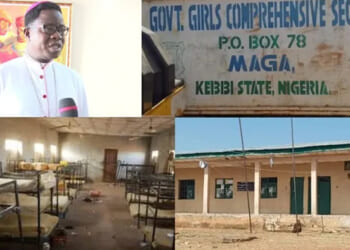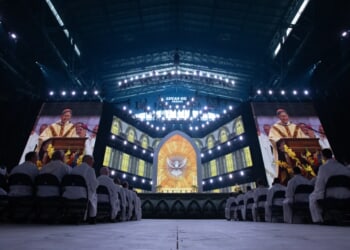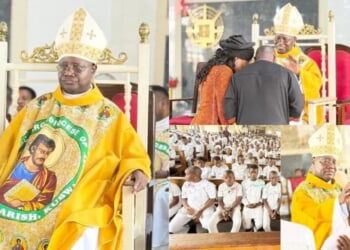The time is now ripe, both legally and politically for a US-Saudi 123 agreement with regard to nuclear power reactors.
Reports have been circulating that the United States may finally enter into an agreement with Saudi Arabia to allow US companies to assist the Kingdom in building its multiple planned nuclear power reactors. Several outlets and officials have suggested that a breakthrough is plausible, and there is talk that Crown Prince Mohammed bin Salman’s expected November visit to Washington could be a logical moment to announce a deal. Nothing is certain until it is signed, of course, but the diplomatic runway is clearly being prepared.
Such an agreement between the United States and Saudi Arabia has long been discussed. In earlier iterations, the civil nuclear track was embedded within a broader political bargain that would have tied US-Saudi defense and technology cooperation to Riyadh’s recognition of and normalization of relations with Israel. The horrific Hamas attacks on Israel on October 7, 2023, shattered that diplomatic path and, at least for a time, made such a comprehensive political deal impossible. Subsequent reporting suggests the nuclear file has since been treated more flexibly. It has been effectively delinked from immediate Saudi-Israeli normalization and advanced on its own merits and timeline.
In other words, the civil nuclear deal now appears to be traveling on its own track. It could ultimately connect to other US-Saudi arrangements, e.g., defense cooperation, technology investment, or energy transition initiatives. But the legal and policy questions around a peaceful nuclear cooperation agreement do not depend on a grand bargain to be answered. They can and should be assessed on their own terms.
The idea of the United States entering into such an agreement — commonly called a “123 Agreement,” after Section 123 of the Atomic Energy Act of 1954 (AEA) — has been controversial for some time.
Opponents of a US-Saudi 123 Agreement warn that any agreement lacking a categorical Saudi renunciation of the possession of enrichment and reprocessing (ENR) technologies on Saudi territory would be an imprudent retreat from the “gold standard” established in the 2009 US-UAE 123 Agreement and would risk eroding the high nonproliferation standard achieved in the UAE agreement. It would also normalize the development of proliferation-sensitive fuel-cycle capabilities in a volatile region. They cite past Saudi officials’ remarks about matching Iran if it were to develop nuclear weapons and recent statements by the Saudi energy minister that the Kingdom intends to develop enrichment at some stage.
Proponents reply that neither the 1970 Nuclear Nonproliferation Treaty (NPT) nor AEA Section 123 requires a legal renunciation of ENR by a nuclear technology recipient. They note that most US 123 Agreements in force contain no such clause and that US prior consent rights, IAEA safeguards, physical protection commitments, and rights of return that are required by the AEA have always been the legal backbone of US nonproliferation policy when it comes to civilian nuclear trade. They argue that refusing to engage as a nuclear supplier with Saudi Arabia would simply drive Riyadh to make supply deals with much less transparent, less well-regulated, and less safe nuclear suppliers. And that this would be an unnecessary blow both to US national security interests and to the US nuclear industry.
Ultimately, in my view, a US-Saudi 123 Agreement, properly designed, would be consistent with both international law and US domestic law and would strike a workable balance between US policy priorities of promoting the spread of safe nuclear energy and US industrial participation therein on the one hand and effectively managing nuclear nonproliferation and national security risks on the other.
International Law
Let us begin with international law and the cornerstone nuclear energy treaty, the NPT. The basic “grand bargain” of the NPT is familiar. It’s something I have written about for decades. The three principled pillars of the NPT — nonproliferation (Articles I-III), peaceful use (Article IV), and disarmament (Article VI) — constitute a quid pro quo grand bargain between nuclear weapons possessing states and non-nuclear weapons possessing states. In its two paragraphs, NPT Article IV first affirms the “inalienable right” of all parties to develop and use nuclear energy for peaceful purposes, without discrimination and in conformity with Articles I and II (i.e., without weaponization). It then creates an obligation on nuclear supplier states to assist developing states in their development of peaceful nuclear energy programs.
Nothing in the treaty’s text prohibits a non-nuclear-weapon state party (NNWS) such as Saudi Arabia from possessing all of the elements of the civilian nuclear fuel cycle. The limiting nonproliferation principles are contained in Articles I-III and prohibit the manufacture or other acquisition of nuclear explosive devices by an NNWS and require export controls and program verification under IAEA safeguards. Compliance with these nonproliferation obligations is eminently achievable by states that possess the elements of the full civilian nuclear fuel cycle.
Many countries — including Saudi Arabia — have long maintained that Article IV positively protects their option to develop enrichment or reprocessing if they so choose. This is a controversial proposition among some in Washington, but as I have explained previously at length, they are essentially correct in their reading of the NPT.
Other states, and in particular some nuclear supplier states, counter that in practice, sensitive fuel-cycle activities heighten proliferation risk and should be discouraged, especially in new programs. The Nuclear Suppliers Group (NSG) is the international political forum in which these policy concerns have historically been implemented by nuclear supplier states in the form of guidelines on nuclear trade restrictions agreed on a non-legally-binding, political commitment basis by NSG adherents.
Over the years, participating governments have refined the NSG’s guidelines to insist on increasingly restrictive criteria for any transfer of sensitive ENR technology in the name of stopping the spread of proliferation-sensitive technologies. In 2011, the NSG adopted criteria specifically for ENR transfers, emphasizing adherence to the NPT, full-scope IAEA safeguards, and strong physical protection and export controls as conditions of supply.
Critics in the Non-Aligned Movement, joined by Saudi Arabia, have long viewed the NSG as a supplier state cartel that, in its restrictions on nuclear materials and technology transfer, overreaches what recipient states agreed to in the NPT itself, thereby weakening the NPT grand bargain.
Whatever one thinks of this normative critique, it should be recognized as a practical matter that it is a longstanding and well-documented political reality. It also shapes many developing states’ diplomatic negotiating positions with regard to nuclear technology transfer.
Setting aside the Article IV debate regarding the NSG (particularly since a US-Saudi 123 Agreement would almost certainly not include direct ENR technology transfer), the text of the NSG guidelines does not prohibit a supplier state from engaging in trade in nuclear materials, technology, and services with a recipient country that has not renounced ENR development or possession. Put simply, there is nothing in either Part 1 or Part 2 of the NSG guidelines that requires recipient states to forswear enrichment or reprocessing as a condition of receiving nuclear materials, technology, or related nuclear energy services.
A U.S.-Saudi 123 Agreement that does not include that requirement would therefore neither violate the NPT nor be in noncompliance with the United States’ commitments pursuant to the NSG guidelines.
US Domestic Law
As noted, so-called 123 Agreements are rooted in Section 123 of the AEA, codified at 42 U.S.C. § 2153. The statute sets out nine nonproliferation-oriented criteria that all such agreements must contain, including a requirement of IAEA safeguards application; a commitment to physical protection standards; broad assurances of no explosive or military research, development, or use; storage facility approval; a right of required return of transferred materials and technology in the case of significant noncompliance; and —crucially — US prior consent rights over any enrichment, reprocessing, other alteration, or retransfer of US-obligated nuclear material.
Each proposed agreement must be submitted to Congress with a Nuclear Proliferation Assessment Statement (NPAS), and it enters into effect only after a period of congressional review. The NPAS is where the administration must detail how the specific trade terms of the 123 Agreement will meet the highest standards of US nonproliferation law and policy and is a key procedural requirement. Congress must be satisfied with the NPAS in order for the 123 Agreement to be approved. This robust nonproliferation framework is contained in the AEA and is subject to both US congressional and executive branch approval, monitoring, and enforcement. It is the legal backbone of US peaceful nuclear cooperation.
The United States has dozens of 123 Agreements in force with partners around the world. The Department of Energy notes that as of mid-2025, Washington maintains 26 agreements covering 50 partners. Among those, only the US-UAE 123 Agreement includes a legally binding renunciation of ENR. In every other case, Washington manages ENR as a sensitive option through case-by-case prior consent, IAEA safeguards, physical-protection commitments, retransfer controls, and congressional oversight, rather than via a categorical legal ban. To date, there is no publicly documented case of US-origin nuclear material or technology, provided under a 123 Agreement, being diverted to a nuclear weapons program. The statutory and oversight architecture of AEA Section 123 provides multiple layers of protection against such a diversion.
In short, nothing in the AEA requires a recipient state to forswear ENR in order to conclude a 123 Agreement, and by far most 123 Agreements in force with other countries do not include such a requirement. A US–Saudi agreement that meets the AEA’s robust nonproliferation requirements, while not demanding a legal ENR renunciation, would therefore be fully compliant with US law.
The UAE Anomaly
Nevertheless, it is true that, particularly in Washington nuclear arms control circles, the 2009 US-UAE 123 Agreement is widely described as the “gold standard” of 123 Agreements. In it, Abu Dhabi legally committed itself to forego domestic enrichment and reprocessing and adopted the IAEA Additional Protocol. These were extraordinary steps at the time and were designed to launch the Barakah project under the most stringent of confidence-building measures. The UAE agreement’s Article Seven makes the renunciation explicit, and contemporaneous White House and State Department statements emphasized how unusual those provisions were.
But it is essential to keep the anomalous nature of this agreement clear. Nothing in international or US law required the UAE 123 Agreement to be concluded in this way. In fact, the commitment by the UAE to forego ENR was exceptional in the history of US 123 agreements and remains so today. Later, when the United States concluded a 123 Agreement with Vietnam in 2014, Hanoi did not make a legally binding ENR renunciation. Instead, Vietnam made a political decision to rely on the international market for fuel, with standard US consent rights and safeguards applying to any future request to engage in ENR with US-obligated material. The administration’s transmittal documents and congressional hearings made that structure explicit.
Since the UAE agreement, no other state has been willing to sign a 123 Agreement with the United States that includes a UAE-style ENR legal renunciation. Several states have demonstrably pushed back on attempts to impose such a requirement, often invoking their understanding of NPT Article IV. Saudi Arabia has been among them. The Kingdom’s energy minister, Prince Abdulaziz bin Salman, said in January 2025, “We will enrich it and we will sell it,” describing a vision to monetize domestic uranium resources and, over time, add enrichment to the Kingdom’s fuel-cycle options. That line reflects long-standing Saudi positions about preserving the ENR option under safeguards, even as Riyadh moves toward full-scope safeguards implementation.
Advocates of the “gold standard” argue that any retreat from the UAE model is a retreat from the highest nonproliferation standards. That is one way to tell the story. Another, more legally and historically accurate way, is that the UAE pledge was a data outlier, made in a specific political and economic context. It is one model of a 123 Agreement. Not the only model. And holding that model out as a universal rule has had the unhelpful effect of freezing US influence out of markets where other suppliers, who are far less exacting on nuclear safety, security, and nonproliferation standards, have been and are eager to step in.
Policy Arguments in Favor of a US 123 Agreement with KSA
Turning from law to policy, there are a number of compelling reasons for the United States to conclude a 123 Agreement with Saudi Arabia at this time.
First, it is a fact that Saudi Arabia has decided to move forward with a civil nuclear program as part of its broader energy diversification efforts. It has canvassed multiple potential vendors, including Korean, French, Chinese, and Russian, among others, and has repeatedly signaled interest in building at least two large power reactors in the near term. If the United States makes a categorical ENR renunciation a precondition of nuclear technology sharing and its rivals do not, Riyadh has ready alternatives. That outcome would push a major regional program into supply chains where US regulatory culture, safety standards, and safeguard support have less traction.
Second, due to the robust nonproliferation requirements mentioned previously, a US 123 Agreement would maximize transparency and leverage compared to non-engagement. These tools would give Washington visibility into how the Saudi program develops in a way that it simply would not have if Saudi Arabia turned to suppliers outside of the US regulatory framework.
Third, integrating Saudi Arabia’s program into a US/allied technology ecosystem is a win for US concerns about nuclear safety and security. US and allied vendors are bound by demanding domestic regulators, and they carry with them hardened practices in physical protection, cybersecurity, and emergency preparedness. Over time, institutionalized cooperation will build a culture that makes facilities safer, materials more secure, and safeguards more effective.
Fourth, the national security and industrial stakes are significant. A scaled Saudi program locked into Western technology and fuel services would support US industry at a moment when American firms are reentering global markets and when US and allied supply chains need anchor clients. Strategically, it would reduce the space for Russia or China to parlay nuclear projects into decades-long economic and political influence over critical energy infrastructure and standards. These are not abstract concerns. They are the very arguments successive administrations have made in favor of responsible US nuclear exports.
Fifth, under a 123 Agreement, the US government retains an ongoing, meaningful check over Saudi use of US-origin materials and technology. A Section 123 Agreement is not a one-time rubber stamp. Having the agreement in place creates continuing prior-consent rights regarding use and rights of return of materials and technology if the US detects noncompliance. This ongoing check provides confidence in the peaceful nature of the Saudi nuclear program that the United States would not otherwise have.
The Path Forward to Safer Nuclear Power
As I have explained herein, nothing in either international law or US domestic law restricts the United States from entering into a 123 Agreement with Saudi Arabia that meets the requirements of the AEA but does not require Riyadh to legally forsake ENR technologies.
From an economic and national-security perspective, a balanced US-Saudi 123 Agreement serves US interests by promoting US and allied nuclear technology and nuclear industries — among the most tightly regulated in the world — and by shaping Saudi Arabia’s program within a framework that gives Washington visibility and influence over time. The rigors of the AEA and the transparency obligations embedded in any 123 Agreement would reduce proliferation risk compared to a scenario in which Riyadh turns to other suppliers. And strategically, anchoring a major Middle Eastern program to Western standards strengthens the global nonproliferation regime by advancing a practice of high-bar cooperation rather than ceding markets to suppliers who are far less exacting.
Finally, a thoughtfully crafted 123 Agreement with KSA could set the stage for a pattern of US cooperation with other nuclear-newcomer states. Many developing countries are, like Riyadh, unwilling to sign away fuel-cycle options as a matter of principle under the NPT, yet they are willing to accept strong safeguards, including the IAEA Additional Protocol, which increases the transparency of the entire fuel cycle, US consent rights over US-obligated material, and demanding physical-protection and export-control standards. Meeting them on that basis, without lowering nonproliferation standards, could unlock a wave of responsible agreements that grow nuclear power safely, reduce carbon intensity, and embed allied supply chains, while preserving the United States’ ability to shape outcomes where it matters most — in the details of implementation, year after year. That is how nonproliferation succeeds in the real world: by engagement, not by abstention.
About the Author: Daniel Joyner
Daniel Joyner is the Elton B. Stephens Professor of Law and Director of International Programs at the University of Alabama School of Law, and Principal at Prometheus Nuclear LLC. Prior to joining the Alabama Law faculty in 2007, Professor Joyner taught for four years on the faculty of the University of Warwick School of Law. During Michaelmas Term 2005, he was also a Senior Associate Member of St. Antony’s College, Oxford University. He has additionally written on the rights of states in international law, treaty interpretation, international economic sanctions, international use of force law, fragmentation theory, the United Nations Security Council, and international investment law.
Image: Shutterstock/esfera


















